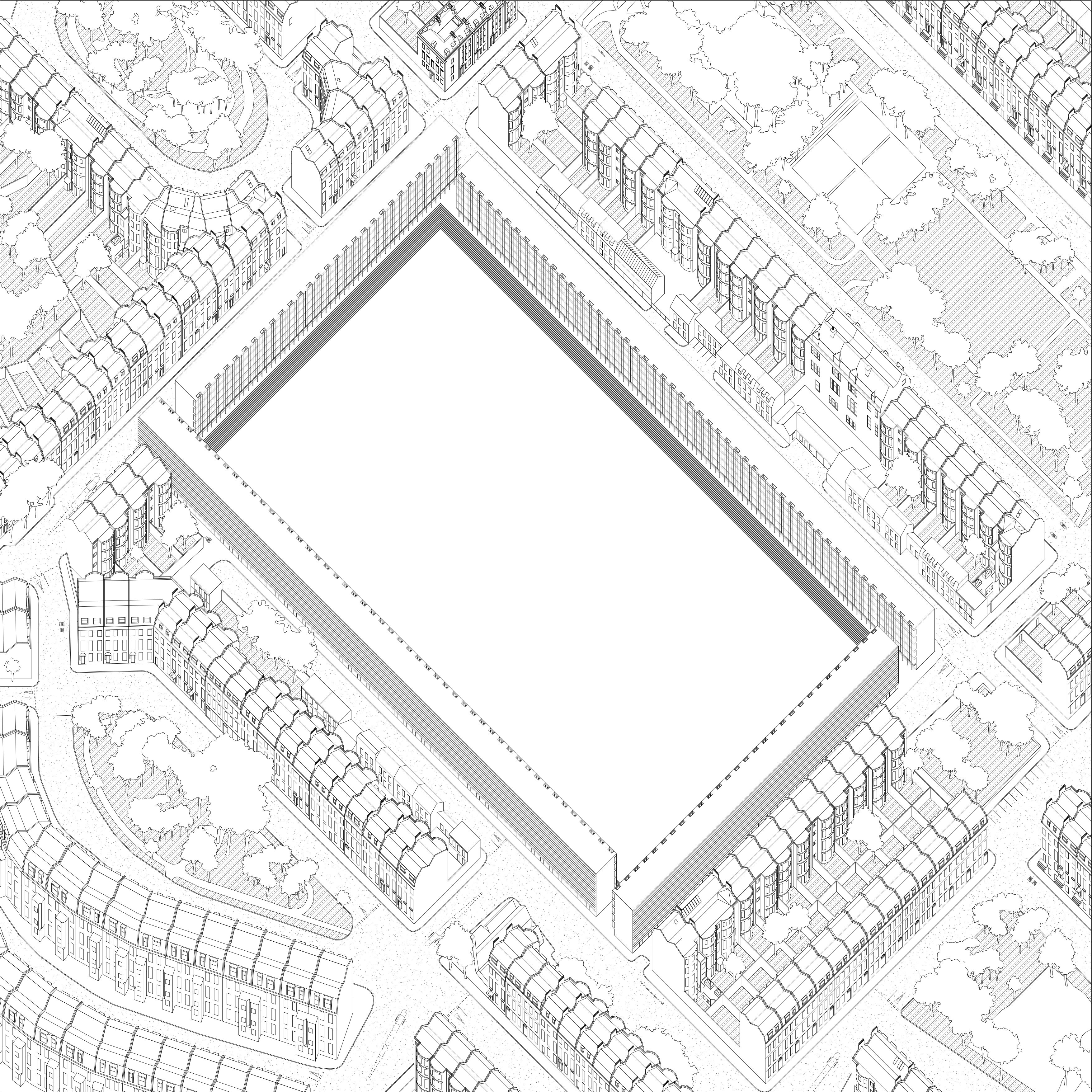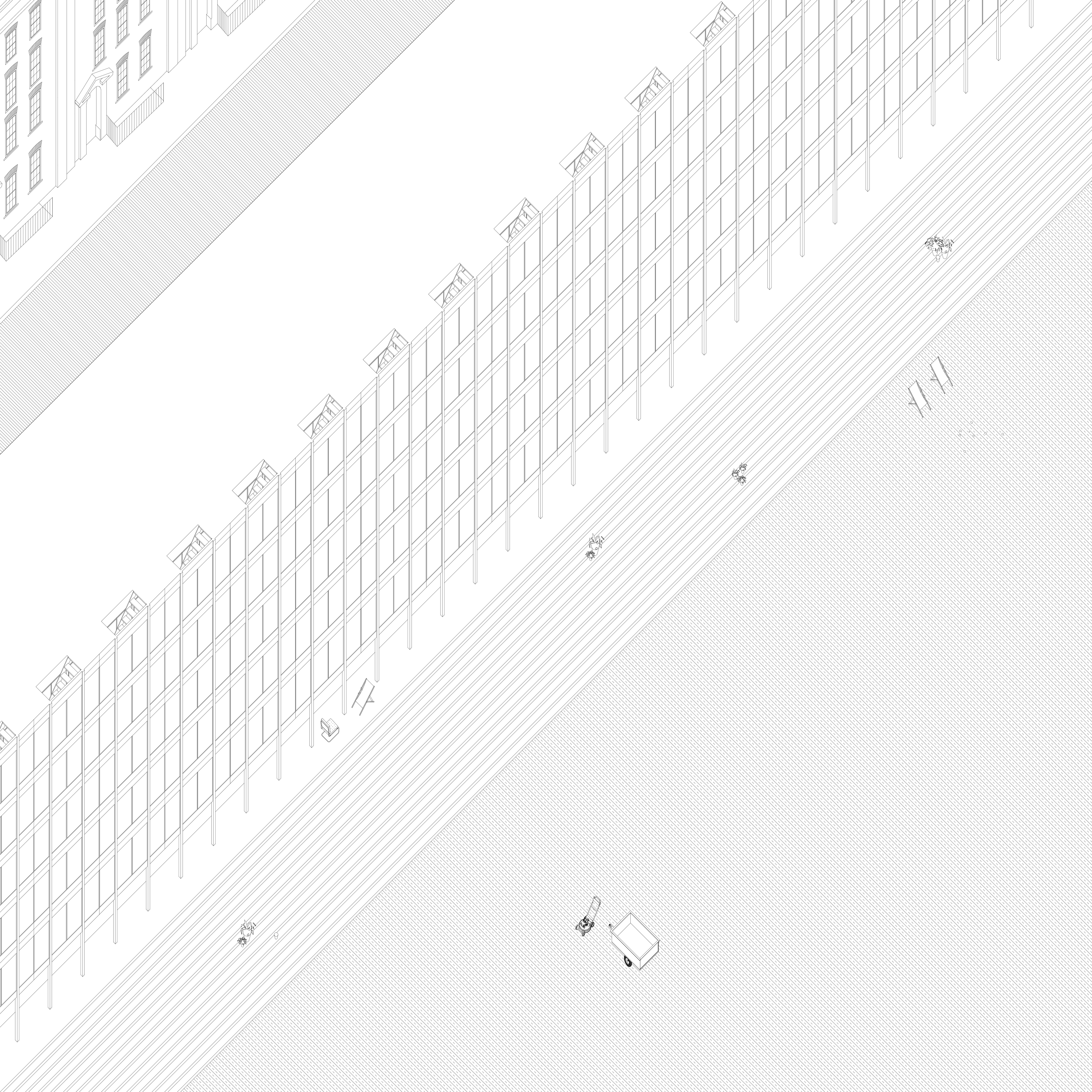- INTRODUCTION
- LECTURES
- Critical practices in the Architecture of the Baltic Region / An Introduction by Lolita Jablonskienė
- Ieva Zībārte / Uncensored Admiration. 10 Quiet Forms of Dissidence in the Life and Work of the Architect Marta Staņa
- Ingrid Ruudi / Critical Architecture between Prestroika and Independence? GROUP T Architects in Tallinn
- Marija Drėmaitė / Critical Practices in Lithuanian Architecture of the Soviet Period
- Andres Kurg / The Papers, Exhibitions and Buildings of the Tallinn School in Estonia
- Ivan Ristić / Bogdan Bogdanović – the Practice of Architecture under Changing Political Regimes in Yugoslavia
- INTERVIEWS
- ESSAYS
- Tor Lindstrand, Håkan Nilsson / Staging Subversive Opportunism in the Age of Feedback Loop
- Manuel Bürger / Slipping Through Templates. Limitation as a Tool of Control - A Design Observation
- Ethel Baraona Pohl / Emancipatory Architecture
- Jack Self / The Only Task of Architecture
- Eray Çayli / Turkey’s Construction Boom as Opportunity and Publicness as Medium of Subversion
- ABOUT

California, 2008. The material supply of housing is subsidiary to its financial procurement.
“The masses haven’t waited for future revolutions nor theories which claim to ‘liberate’ them by a ‘dialectical’ movement. They know there is no liberation, and that a system is abolished only by pushing it into hyperlogic, by forcing it into an excessive practice which is equivalent to a brutal amortization.” Jean Baudrillard1
"The neoliberal values presented in the 1980s and 1990s as vectors of independence and self-entrepreneurship, revealed themselves to be manifestations of a new form of slavery producing social insecurity and most of all psychological catastrophe. The soul, once wandering and unpredictable, must now follow functional paths in order to become compatible with the system of operative exchanges structuring the productive ensemble.” Bifo Beradi2
The working class has been sedated by consumerism, the bourgeoisie have been seduced into servitude and the student population is consumed by debt. We are waiting for a dissident group to liberate us from the crushing humiliation of neoliberalism—which delivers only poverty, peonage, crisis and austerity. But it is not at all clear from where this group will sprout, who will form its ranks, or what tactics and strategies they will deploy to bring about any form of radical change.
What is certain is that since both actual production and immaterial labour have now been depoliticised, and thus removed from the field of revolution, the housing question has renewed importance. It is only by rewriting the social contract implicit in our housing—its spatial form, financing, procurement and provision—that the possibility of positive dissidence might be restored. The autonomy of domestic architecture from its capitalist matrix is therefore the single most important activity for the architect to tackle. The orchestration of an oversupply of debt-free, inexpensive and good-quality housing is thus the only task of architecture.
The question at hand is the validity of “subversive opportunism.” The subject of this subversion is undoubtedly the condition described above: a totalizing economic order founded on debt, and one restructuring “global” (Western hegemonic) society, through various wealth redistribution mechanisms, into a new class order. What were once discrete groups—“working class,” “bourgeoisie” and “students”—are increasingly interchangeable, and are being blended with the academic, intellectual and creative classes. This is because as the materiality of production has declined, the working class (which is defined simply as living labour) has come to encompass a greater portion of the population. The “worker” is a source of surplus labour in the production of commodities, and this surplus is extracted and exploited by the bureaucratic infrastructure of the capitalist class. This is the true meaning of the word “industry”, which describes a process of investing less and gaining more, via the theft of wealth (labour) from the workers. But since commodities are no longer purely material, almost everyone is now a “worker” of some kind.
 The face of autonomy.
The face of autonomy.
This is because the rise of so-called “immaterial production” over the last three decades not only describes the production of non-physical instruments, like various forms of intellectual labour, financial services or cultural artefacts, but increasingly takes the form in the West of the production of production—in other words, the architecture of information flows and logistical administration. Much of this meta-production concerns the design of agents of debt, like the unsecuritised personal loan or mortgage. Coupled with stagnating wage rates (there has not been a real terms wage rise in Britain since 1976) and rising debt levels, the result is the siphoning of the masses’ “disposable” income to a dwindling elite, while guaranteeing the long-term stability of neocapitalism, neoliberalism, semiocapitalism or whatever term used to describe it.
Consequently, it is no coincidence that returns on capital investment now outpace wage rises. Those with money can only make more money, and those without money have no hope of accumulating it. This system tends towards hyperstability because debt is a unique form of control. It is the promise of future labour, and therefore the sale of our tomorrows, and with this any alternative. As the Italian philosopher Mario Tronti describes it, “At the highest point of capitalist development, social production becomes a movement of the process of production, which means that all society lives within the factory, and the factory extends its dominion over the whole of society.”3 What he could not have known at the time of writing in the 1960s was that this dominion would evolve a temporal dimension. We have already sold our unborn children into slavery as workers in the great social factory.
Mario Tronti is one of the central characters of the Italian Marxist Autonomist movement (also known as operaismo, or “workerism”) along with such figures as Antonio Negri, Bifo Beradi, Maurizio Lazzarato and Paolo Virno. The ambition of this movement was to develop strategies of resistance to neocapitalism and explore forms of self-organised labour representation. The most complete history of this movement—in any field, including architecture—remains Pier Vittorio Aureli’s excellent book The Project of Autonomy. Although the general theory of the group revolved around the foregrounding of the worker as the principal driver of capitalist processes, Tronti in particular developed a proposal to overthrow the capitalist system through bourgeois institutions themselves. Tronti proposed a model of resistance that attempted to harness and repurpose existing social infrastructure for ends of workers’ autonomy. In other words, his was a strategy within capitalism and against capitalism.
 The Project of Autonomy by Pier Vittorio Aureli (Princeton Architectural Press, 2008).
The Project of Autonomy by Pier Vittorio Aureli (Princeton Architectural Press, 2008).
The strategy of within and against is perhaps the most subversive imaginable under a totalizing ideology like neocapitalism—although it is not intrinsically opportunistic. To appreciate the logic of subversive opportunism we must accept it as a fixed term approximating the sense of undermining neocapitalism whenever possible, and by any means. If we accept opportunism in any other manner we let the fox into the henhouse, because “opportunism,” as Paolo Virno notes4, “is a game with no time-outs and no finish.” It is simultaneously short-termist and never-ending, and thus inextricable from the long-term outcomes of the capitalist processes it seeks to overthrow. The temporal duality of neoliberalism, feeding on immediate crisis in order to close down alternative futures, makes opportunism a dangerous element if separated from that fixed phrase.
Working from within yet against has obvious urban parallels in the myth of the Trojan horse, an instrument that legendarily incentivised a civilisation to admit into its inner sanctum a hostile force. The beauty of the Trojan horse is its precision as a monofunctional weapon. It has only one task. Nonetheless, the design of every component reinforces the general aim: even the task of engineering the concealed hatch, designing the horse’s plume or calculating the wheel diameter required to roll across sand, all contribute to the seemingly impossible task of destroying an entire people. However, the Trojan horse is not to be taken lightly—it must be considered with the utmost care and attention.
 Memories of Occupy (Trojan Horse), 2014, by Jack Self.
Memories of Occupy (Trojan Horse), 2014, by Jack Self.
In the opening of Baudrillard’s seminal philosophical work Simulacra and Simulation (which sadly came in and out of fashion in architecture long before its time), the author describes the paradox of truth thus: an army doctor is presented with a soldier identified as mad, and he must assess if the soldier is truly insane, or merely pretending (presumably in order to be discharged). Under normal circumstances, this question of truth and falsehood is easy to resolve, since the foundation of medicine is that illnesses can be diagnosed independently of patients. Doctors, after all, are able to identify real symptoms.
But what if real symptoms could be faked to such an accurate degree that the truth would be no longer possible? This if remains unspoken at the core of medicine all along, and even the possibility that simulations can trump reality leaves the whole nature of reality itself ambiguous. The solution for the army doctor is as simple as it is odd: he says that if a soldier can fake crazy so well that he can’t tell the difference, its because the soldier actually is crazy—thus incorporating the simulation into reality once more. This parable of truth and insanity, of integrity and its simulation, serves as a powerful cautionary tale against the Trojan horse strategy, which is even now gaining popularity amongst the radical political fringe.
There is a terrific wall surrounding the ruling neoliberal elite, as impenetrable as Troy, and with an exclusion that is absolute. Desperation and lack of opportunity characterise the condition of the populace left outside. Faced with the very high probability of unemployment, poverty, debt, insecurity and scarcity, one can see why the idea of the Trojan horse seems attractive: it leaves in tact the moral righteousness of the agent, while allowing them to effectively (and safely) buy into the status quo (or at the very least the lower classes of the elite).
The general idea of the Trojan horse is that an individual or group presents itself as an entity sympathetic or supportive of some structure, but that in being accepted into that structure it fatally undermines it. Practical applications are fairly limited, for reasons that will be laid out—the dangers of the Trojan horse strategy are so high that almost no adherents manage to get past the first stage. What are frequently called Trojan horse strategies are in fact closer to the army doctor’s parable than anything else.
In the act of Machiavellian manipulation, of disguise, of simulation the entity loses concentration on their subversive agenda. They become middle-aged, they preen and become proud of their place in the structure (the same one they previously sought to demolish), and with this their political radicality ossifies like their arthritic joints. In short, they become first comfortable and then paralysed.
Imagine if, having secretly entered Troy, the soldiers burst from the horse, rushed to open the city gates, then forgot along the way they were Greek and not Trojans themselves, entered several homes and went peacefully into a deep sleep. The Forgetful Greek is mostly what happens when Trojan subversion is attempted, mainly because of a lack of honesty on the part of the one wanting to embody the Trojan horse. The deceive themselves, and in the process call into question the entire possibility of subversion.
What I am describing is not the Sell-Out, which is a different category of failure altogether (and which professes no radicality in any case). The failed Trojan horse continues to insist on their subversiveness even when it is painfully obvious they represent the established order. Rather than admitting that the drive behind the strategy had been in the first place an acute form of power envy, the fake professes purity.
Power envy is not intrinsically a bad thing: the general desire to penetrate a sanctum of authority is a basic Darwinian compulsion. Otherwise there would be no elites. There are, however, two problematic aspects from the perspective of truth: firstly, in cases when power envy itself is dissimulated (this allows the social climber to quite innocently pull the ladder up behind them); secondly, when acceptance into the power structure is mistaken by the agent as the dissolution of that structure (as in the case of the middling sort who, upon being raised in status, no longer recognise their previous class at all). The ubiquity of power envy is also what makes the Trojan horse possible as a form of subversive opportunism in the first place.
The absence of specificity is uncharacteristic of the Trojan horse. From the moment the idea was conceived, through its careful development, construction and execution, the final victory was written into each moment. There was never a general desire (as with Darwinian power envy), but only a precise goal. This is how we can discern the Trojan horse from what will probably become the Sell-Out or the Forgetful Greek.
Further, the metrics of that goal are vital: what is the tangible product of your strategy? What do you hope to achieve? If we follow the logic of neoliberalism, unless an outcome can be measured it cannot have a value—therefore how is a Trojan Horse designed to unfold? What is its timescale, sphere of influence and audience? How can one tell if it has been successful? The absence of these parameters leads only to failure, since it is worse to betray your beliefs than struggle honestly against an impossible condition.
 Cenobium: life without debt. By Jack Self.
Cenobium: life without debt. By Jack Self.
This is the context of the struggle, but we must be extremely precise about our targets and modus operandi. We know there are two scales of spatiotemporal exploitation under neocapitalism — long-term debt slavery and short-term crisis management. The ambition is therefore to use architecture to combat debt and instability, while preserving the only advantage of neoliberalism, and that is mobility and freedom of movement.
Within this framework the ultimate goal must be to subvert the long-term polarisation of society and wealth by manipulating the short-term conditions of debt. In the project Cenobium this aim was pursued by creating a financial breathing space, a zone of fiscal autonomy. To do this required imagining an unusual type of architectural practice: beginning with the creation of a corporate bond lasting 100 years.
 Cenobium: bond-funded architecture. By Jack Self
Cenobium: bond-funded architecture. By Jack Self
Centennial corporate bonds that are not securitised (have no asset underwriting them) are quite rare, but in this case it functions effectively like a very long-term mortgage. The money to build the building is raised on the financial markets, and then each year an agreed interest payment (or coupon) is paid to the bondholder. At the end of the century the investor also gets their original sum back (although this sum is incorporated in this model into an annual amortization payment).

Cenobium: the single cell. By Jack Self.
By extending the period of debt repayment to 100 years one can achieve a number of things: although the interest on the bond is ultimately very high - at 5% per annum, more than 300% of the principal sum - the annual payments are very low. This means the rent can be radically reduced, in this case to below 50% of the London market rate. Secondly, the less sustainable the building, the more the maintenance costs, the less profitable the scheme is overall. This factor determined the form of Cenobium a good deal: the brass-plated service core is an ultra-durable element with a 1000 year life expectancy, with sufficient internal space to accommodate services we cannot yet imagine.
 Cenobium: typological study for a new London terrace.
Cenobium: typological study for a new London terrace.
The obverse of this factor is a desire to create a form of “universal” space, adaptable through time to allow for alternative forms of life. The rigidity of functionalism means that when the patterns of life within a building change, often the structure becomes completely redundant. The generic qualities of a Georgian room, not suited for any single purpose in particular, lend themselves far better to new forms of life than the pigeonhole divisions of contemporary apartments.
For this reason, as much as possible the spaces were designed to require no objects - with fixed furniture fitted directly into the cores. The liberation of the Cenobium typology from traditional load bearing party walls means that, unlike something like the Maison Dom-Ino, which suffers from rigid dependency on the slab and column, Cenobium is able to have floors removed, added, divided, and when combined creates many more possibilities for adaptation through time.
 Cenobium: unity through anonymity; form does not reveal the function.
Cenobium: unity through anonymity; form does not reveal the function.
The result of this is a project that turns the developer's desire for faster turn around, denser construction and cheaper quality into its opposite: sustainability, affordability and generosity. It attempts to liberate the occupant from the debt of ownership through low, fixed rent, and allow them flexibility in their form of life. Through time, it imagines a space liberated from existing conventions on the family unit, and by its blank facade aims to conceal from the exterior the internal arrangement. It is the Black Block of contemporary architecture.
 Cenobium: communal mass housing internal perspective.
Cenobium: communal mass housing internal perspective.
Further, and this is how it is a Trojan horse, the investment is extremely attractive from the point of view of the bondholder. A bond is of course not a share of the equity (the markets do not own the building) but debt, which is the opposite of an asset. By buying Cenobium's debt the investors also remove the parcel of land from the market, since it cannot be bought or sold for at least a century. As a typological study, the scalable nature means the most extreme consequence of this model would be the neoliberal elite bringing about the end of privately held property. This is the subversive nature of the project.
The transition from feudalism to capitalism was possible because the nobility thought the mercantile class were serving only their own interests, by importing luxury goods from distant lands. But in time, merchants realised the infrastructure of trade could be used to ship any volume or kind of commodity. Eventually it became more profitable to ship Polish potatoes to London for the masses than silk from China for the king. At the moment when efficiencies of scale popularised trade, a new capitalist class usurped the feudal nobility: the rise of the “businessmen.” The paradigmatic transition was triggered by subversive opportunism.
In our own time, the equivalent of this is housing. The challenge is, as with the medieval merchants, to find a means to turn the logic of the system back on itself. This is the only task of architecture today.
1. Jean Baudrillard, In the Shadow of Silent Majorities (New York: Semiotext(e) 1983, p.44)
2. Bifo Beradi, The Soul at Work: from Alienation to Autonomy (New York: Semiotext(e) 2009, p.192)
3. Mario Tronti, “La fabbrica e la società,” reprinted in Operai e capitale, p.51 and referenced in The Project of Autonomy by Pier Vittorio Aureli (New York: Buell, 2013), p.35
4. Paolo Virno, “The Ambivalence of Disenchantment,” in Radical Thought in Italy: A Potential Politics (Minneapolis: University of Minnesota Press 1996), p.16




